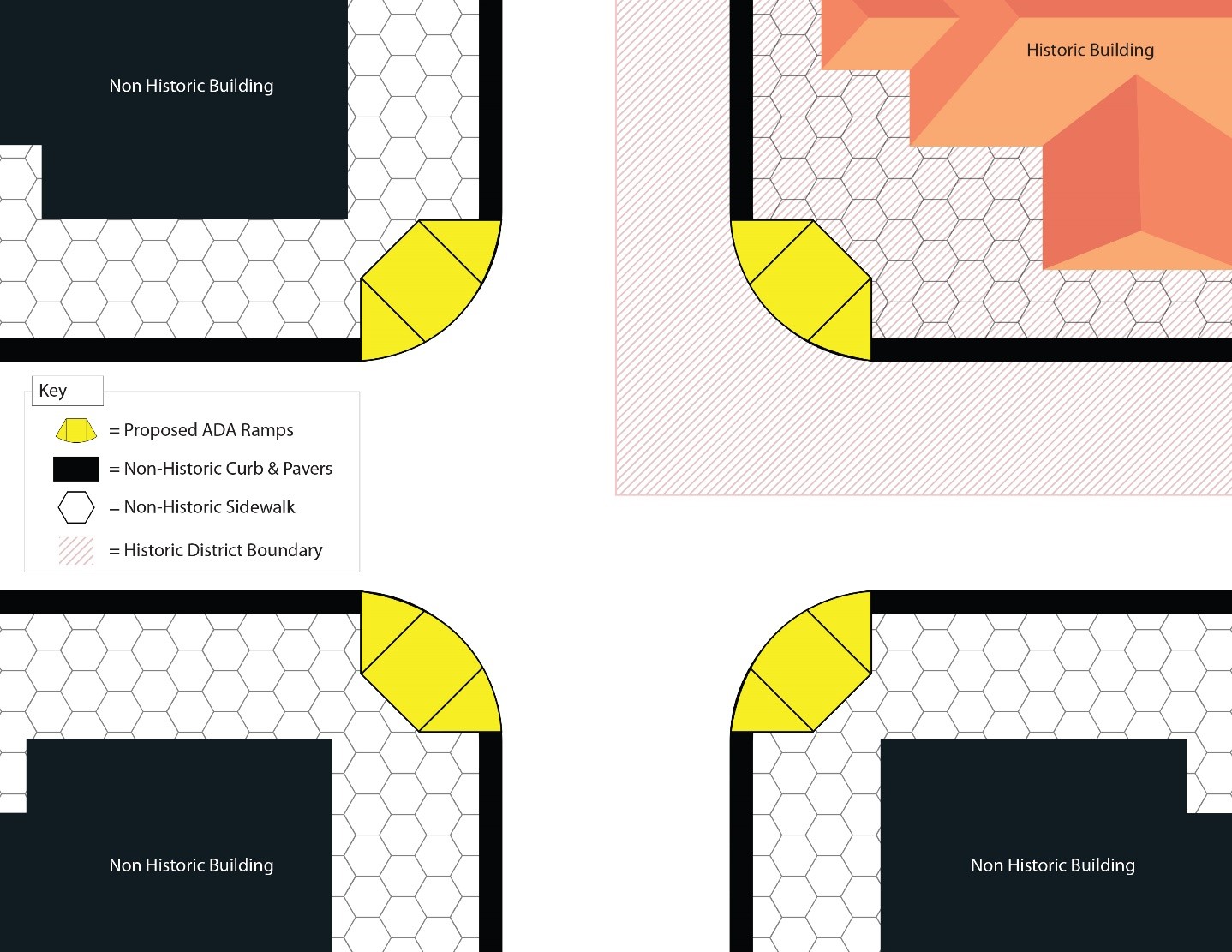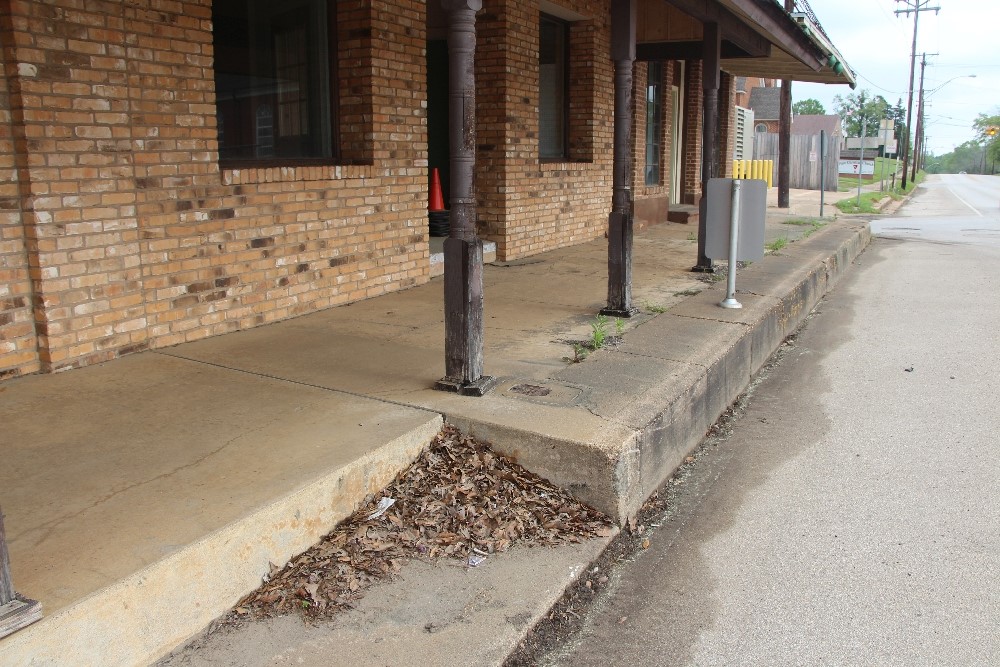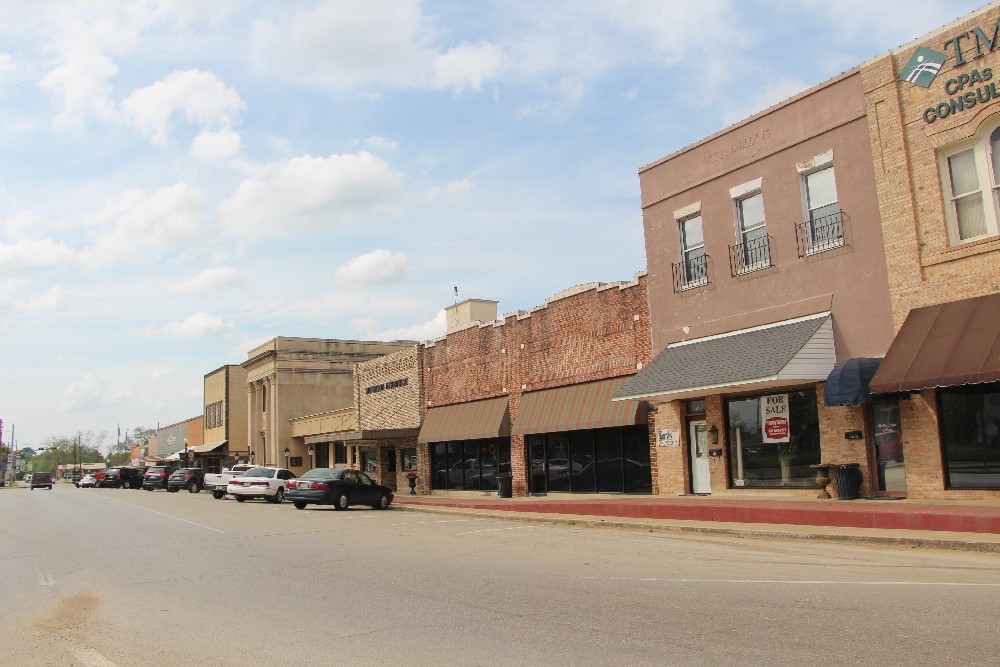Project Examples
FINDING OF NO ADVERSE EFFECT (SIMPLE)
This example illustrates how minor sidewalk upgrades for compliance with the Americans with Disabilities Act (ADA) within a historic district can result in a finding of No Adverse Effect.
Overview
To meet current safety standards and in compliance with the Americans with Disabilities Act (ADA), the State DOT proposed upgrades to 160 existing curb ramps in a downtown commercial area. These upgrades involved new sidewalk ramps and detectable warning fields. The APE was delineated in consultation with the SHPO to include properties immediately adjacent to proposed ADA curb ramp improvement locations. In this commercial area, qualified professional historians identified and recommended a National Register-eligible historic district of eight blocks, containing 30 contributing and two non-contributing buildings. A determination was made by FHWA that the district is National Register-eligible for its significant architecture and historical associations, and SHPO concurred with the eligibility determination.

Map showing one location of proposed ADA ramp upgrades and adjacent historic and non-historic properties.
Issues Considered
- Proposed improvements included replacement of sidewalk segments within a National Register-eligible historic district.
- Potential effects to the historic district were possible with new sidewalk ramps, detectable warning fields, and removal of some existing pavement.
Outcome
The FHWA determined that the installation of the ADA ramps and associated project activities had no adverse effect on historic properties. The sidewalk segments and brick pavers to be replaced, although originally designed to be compatible with the historic district, were not considered to be contributing features of the historic district. Therefore, the modification of the sidewalks and pavement to accommodate installation of accessible ramps did not affect the physical features or associative characteristics that qualify the historic district as eligible for inclusion in the National Register. Further, they were installed in a way that was sensitive to the historic context of the historic district.

The curb ramps in the project area require upgrades to meet ADA standards. Photograph courtesy of Mead & Hunt.

The historic district located within the ADA curb ramp improvement project APE, showing historic buildings and sidewalk with brick pavers determined not to be contributing to the historic character of the district. Photograph courtesy of Mead & Hunt.
For questions or feedback on this subject matter content, please contact David Clarke.

